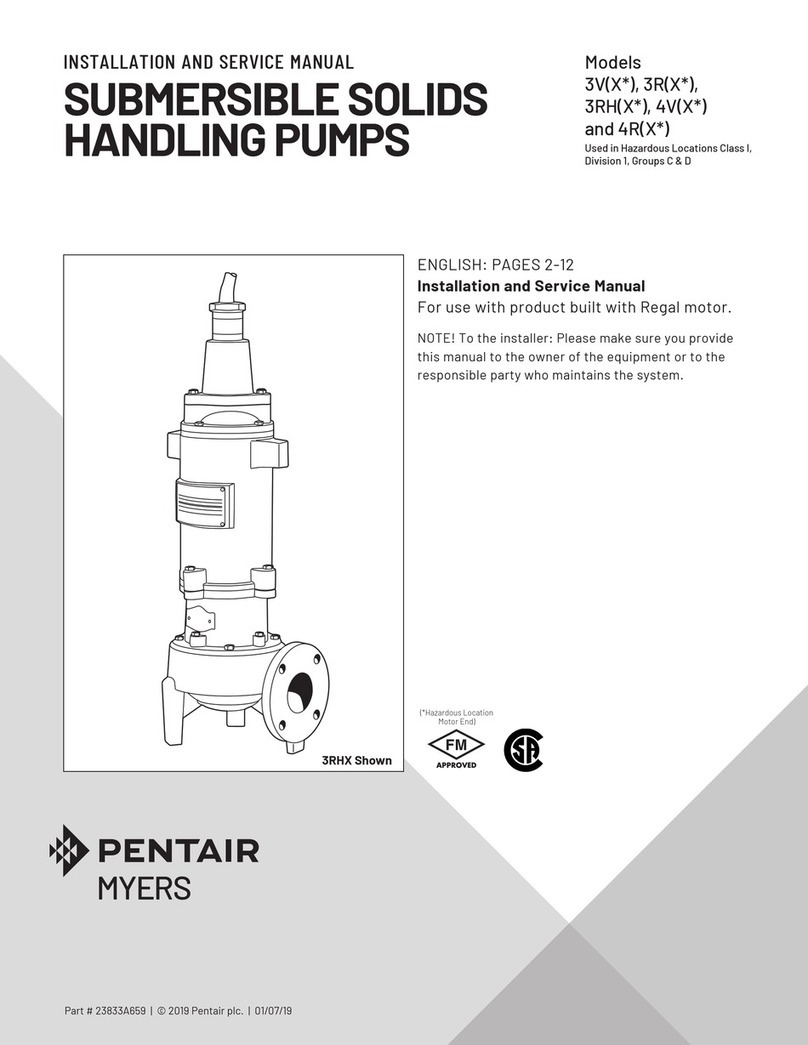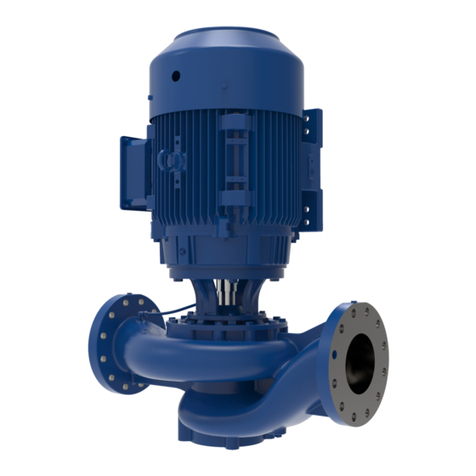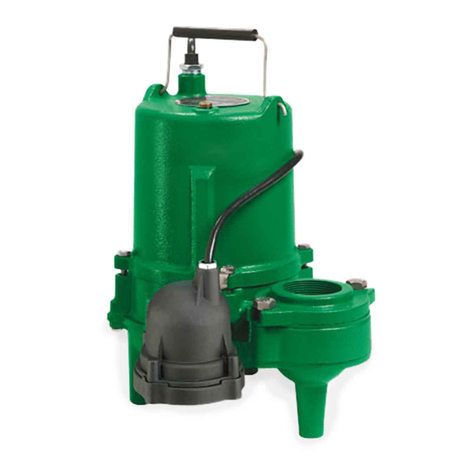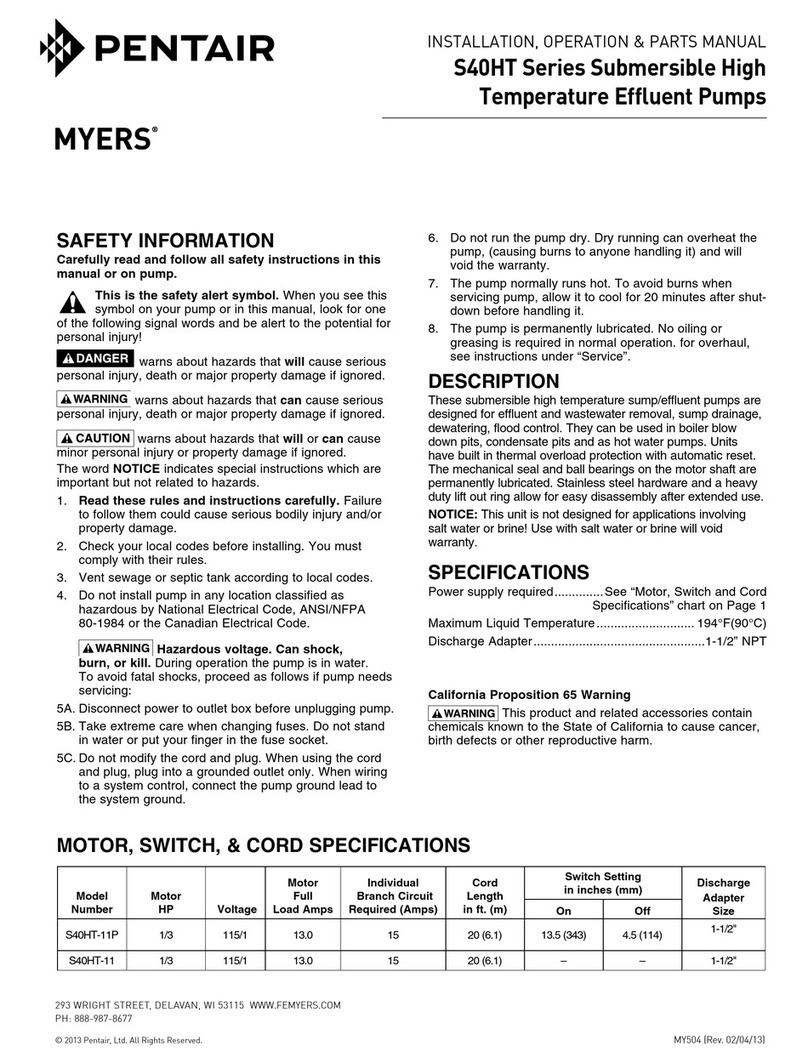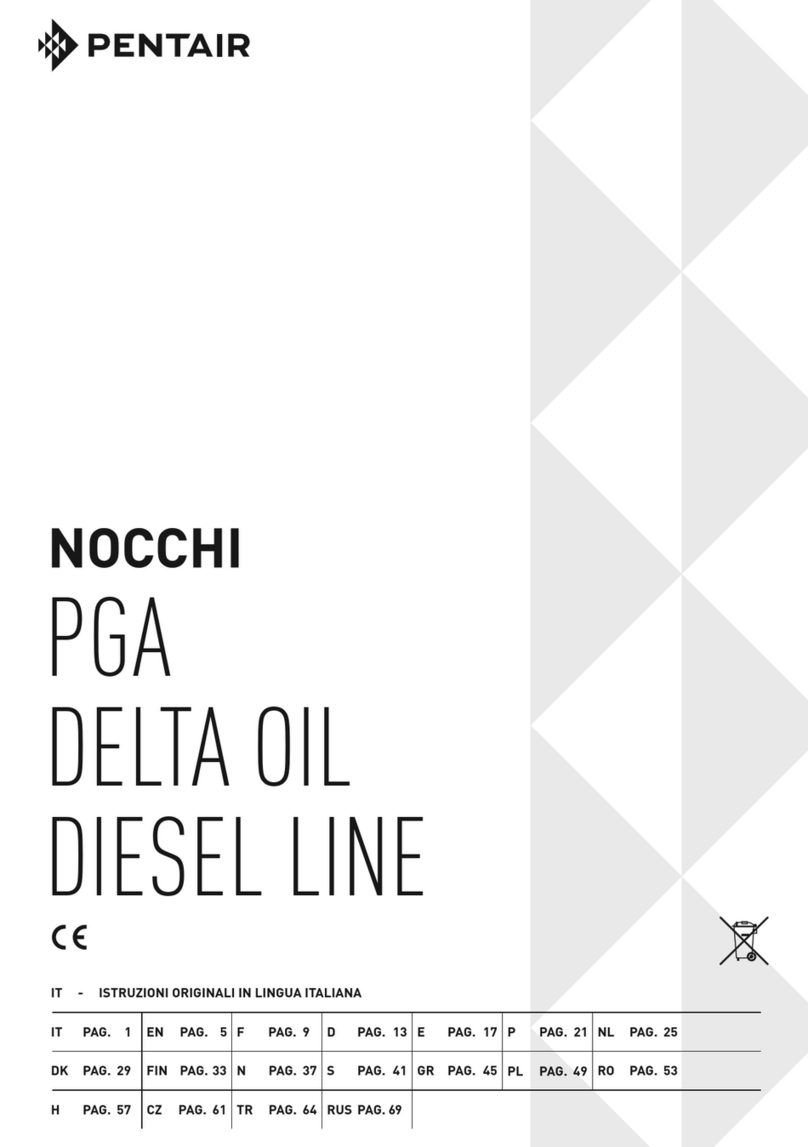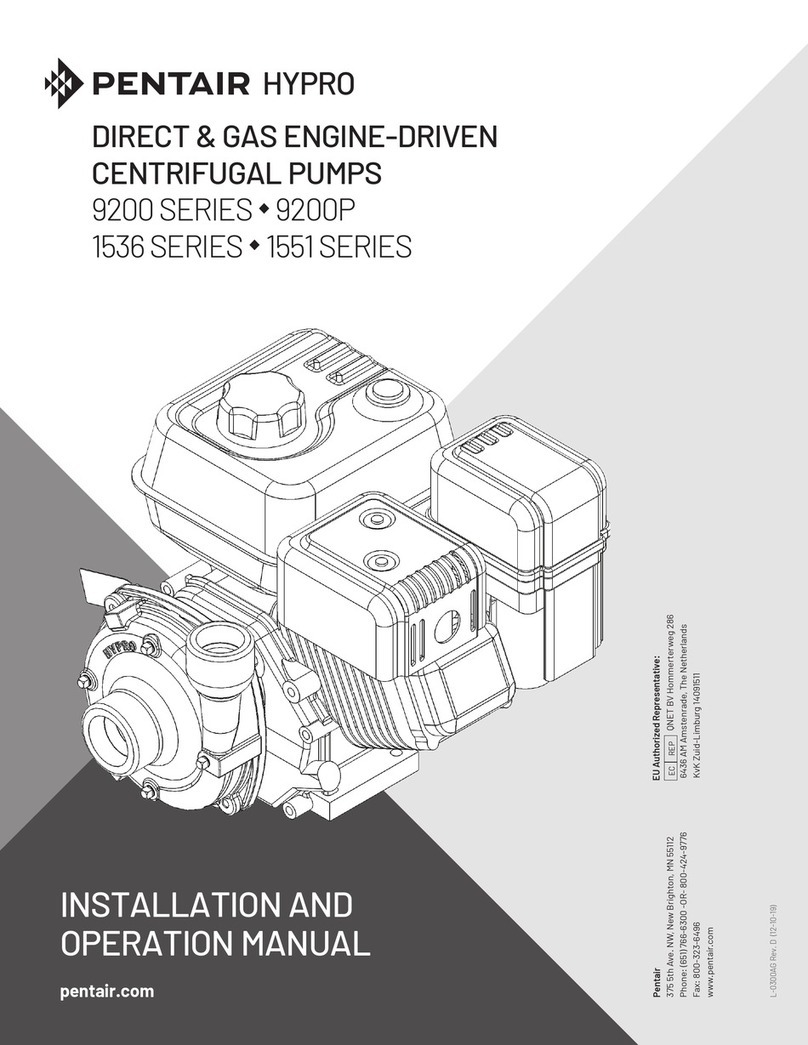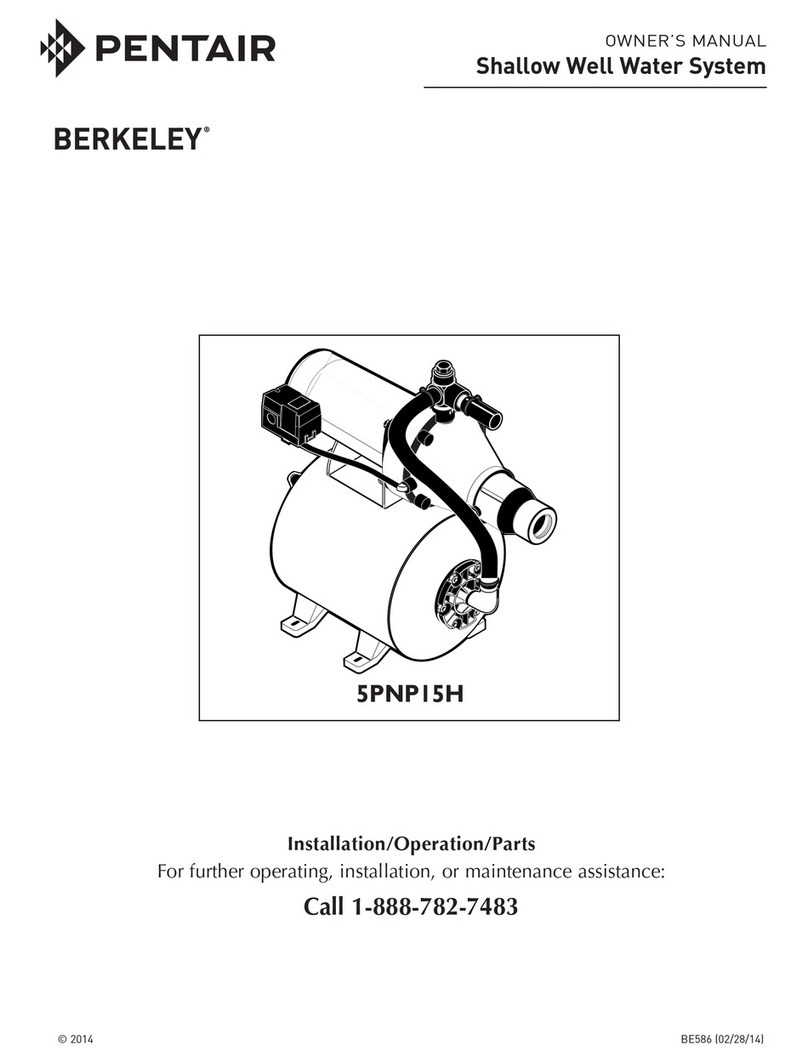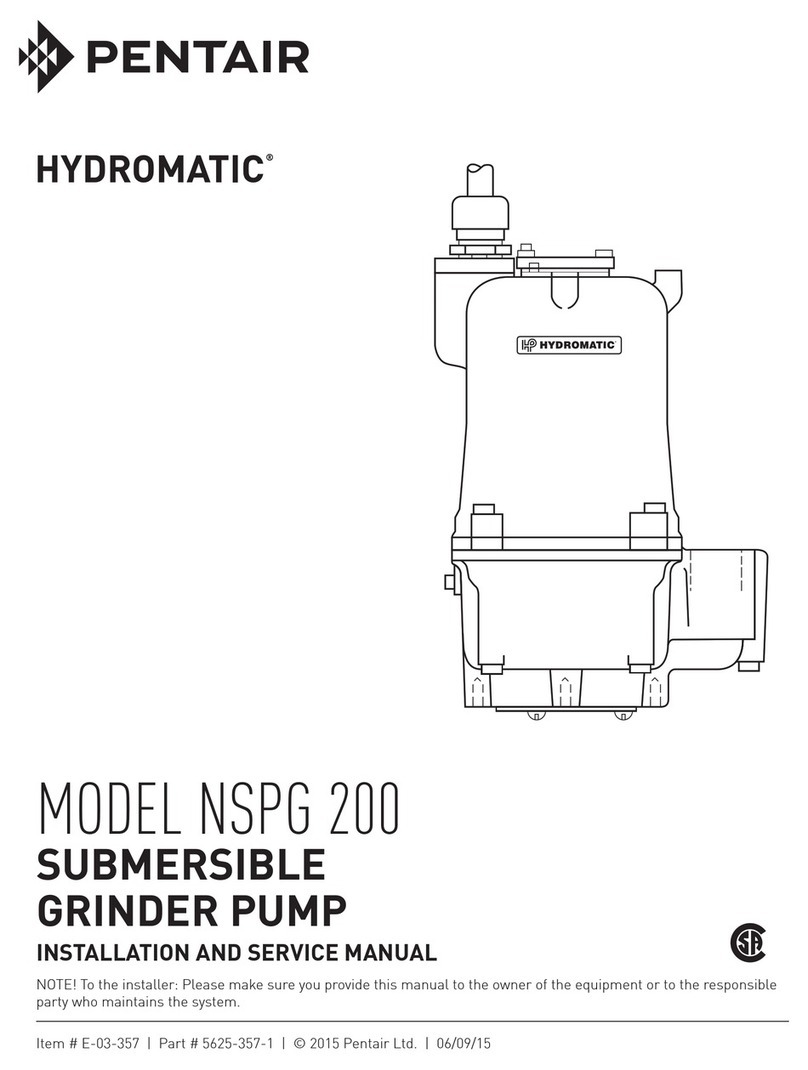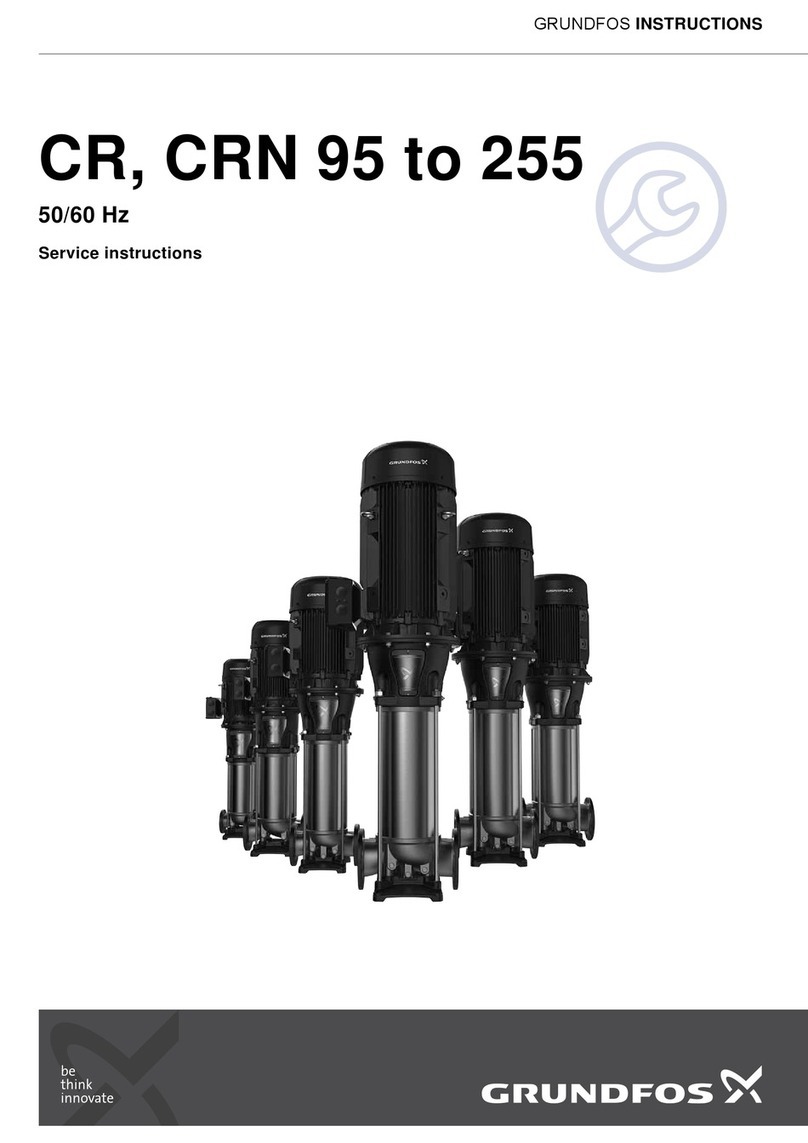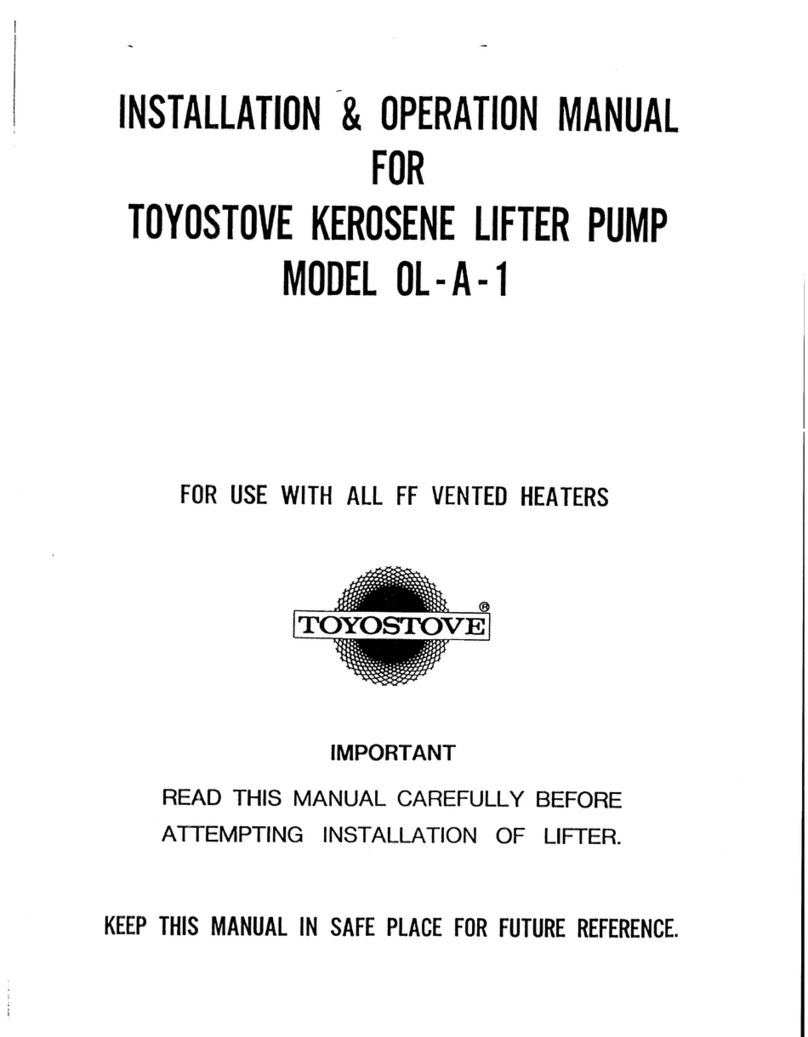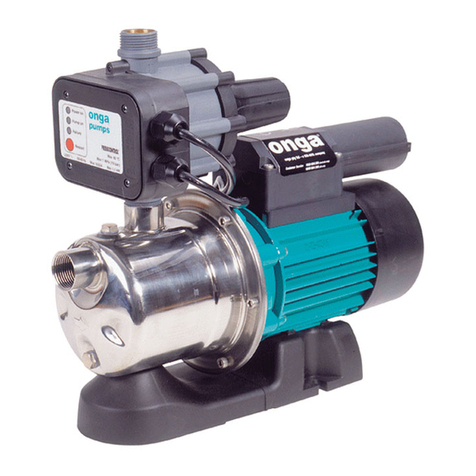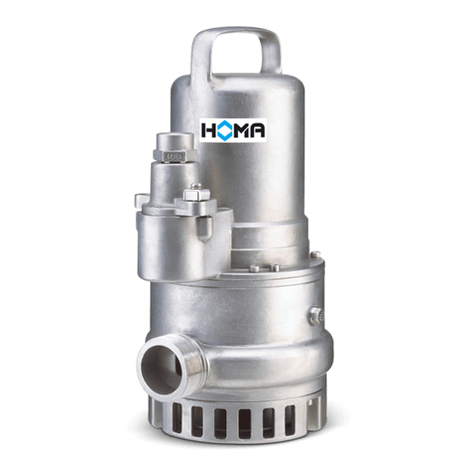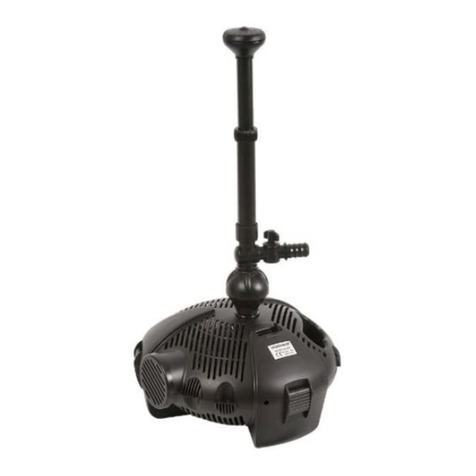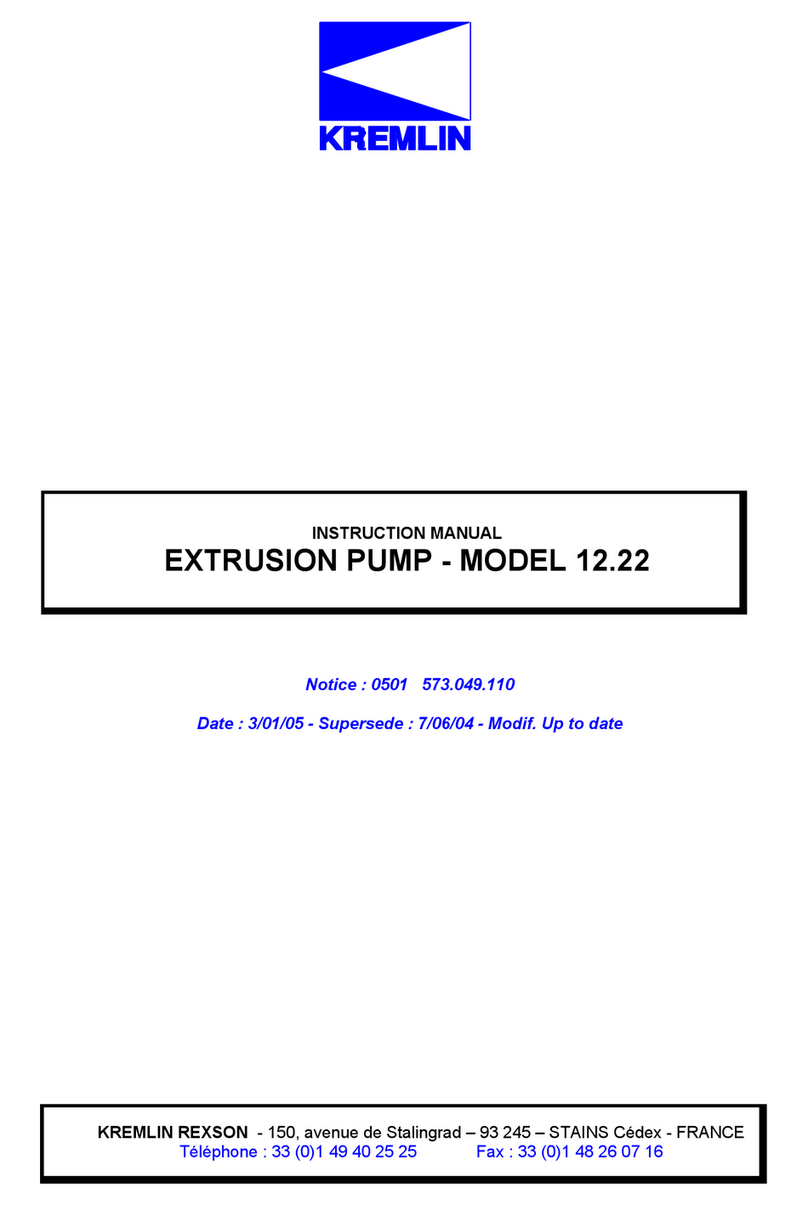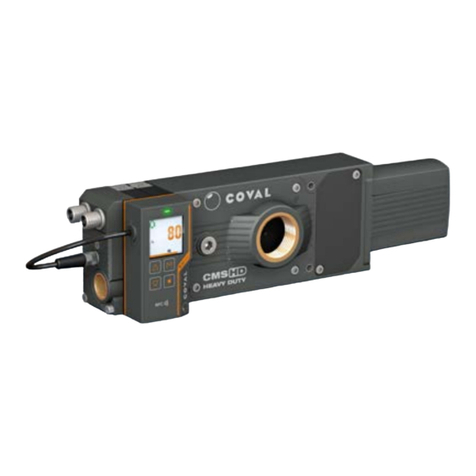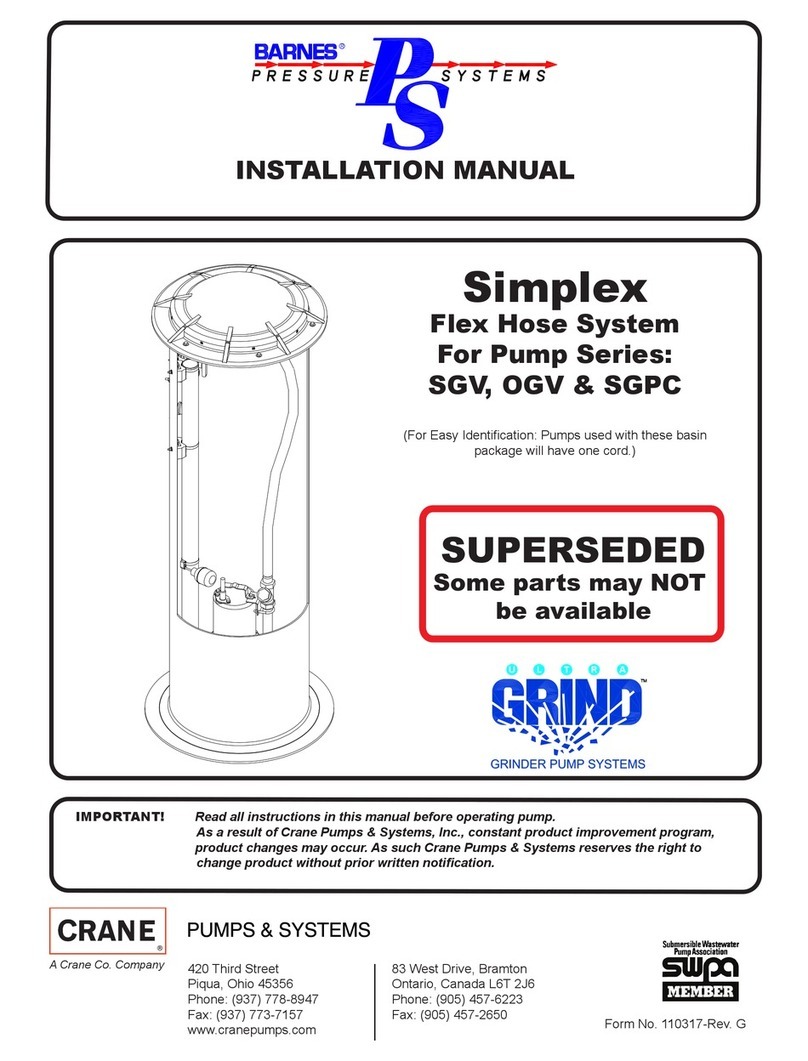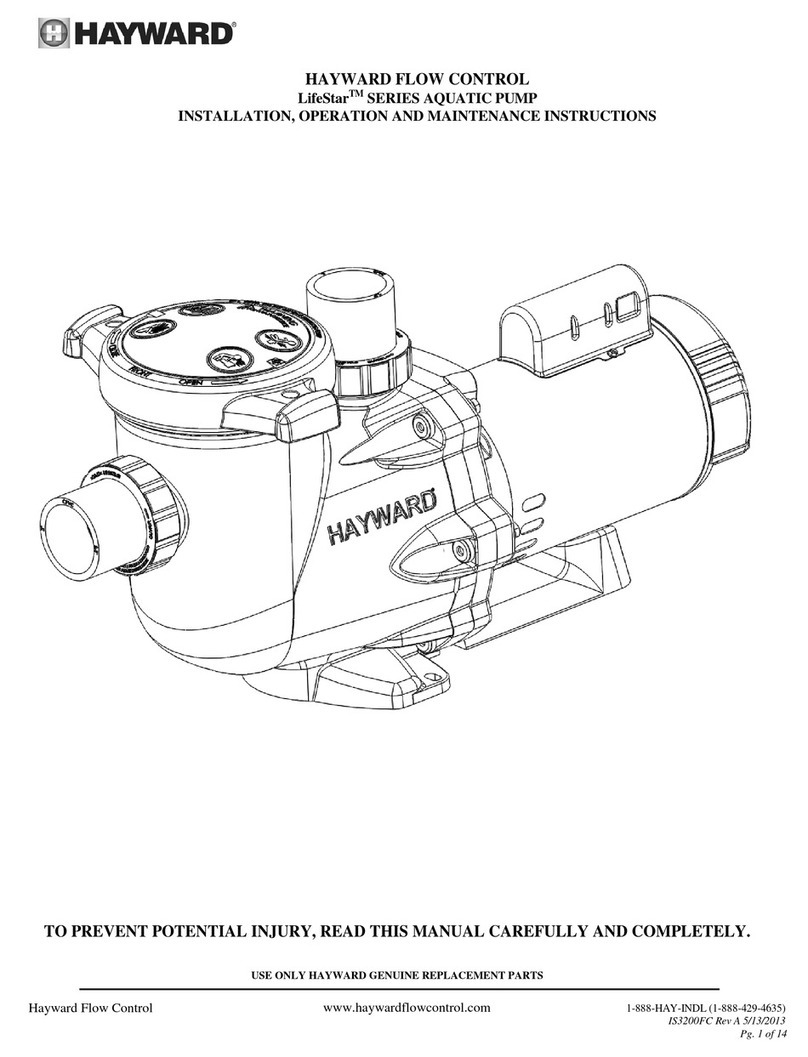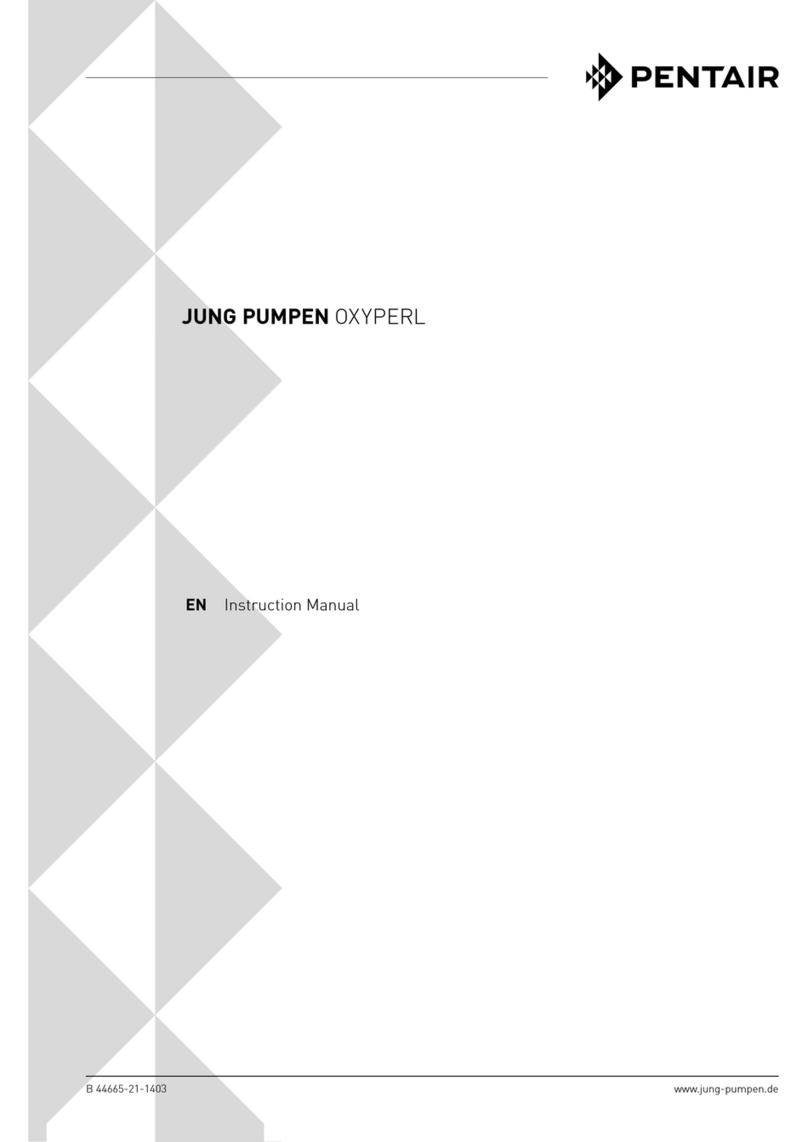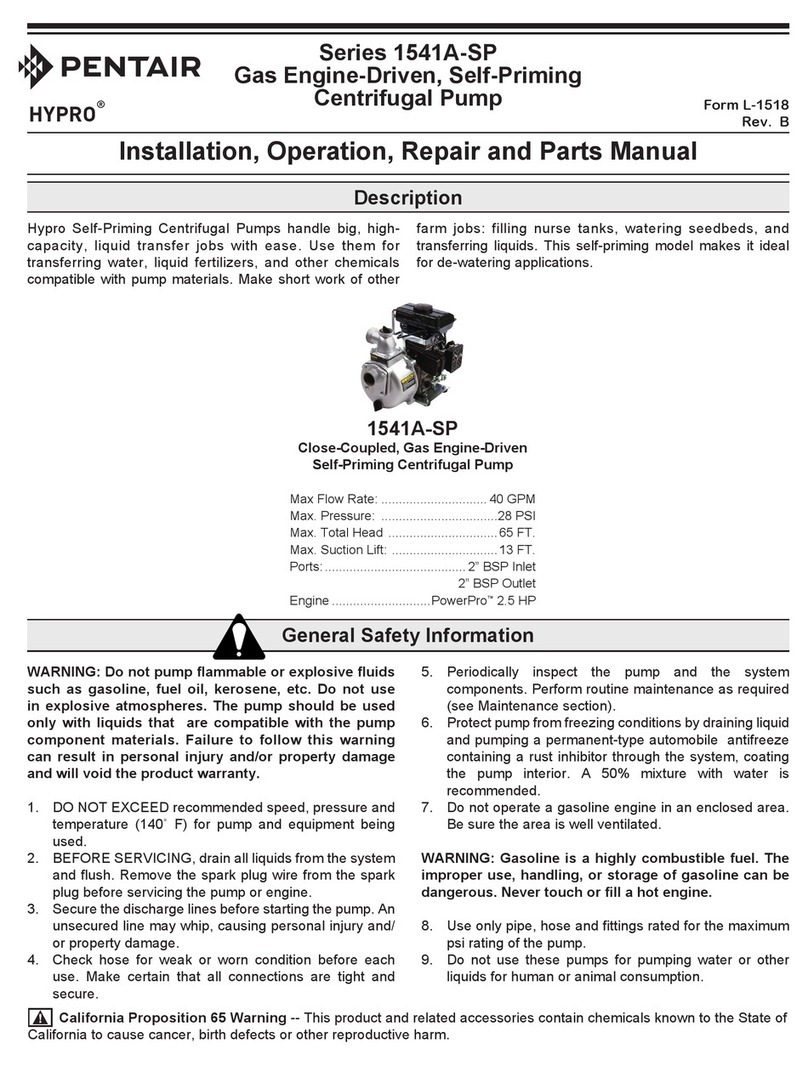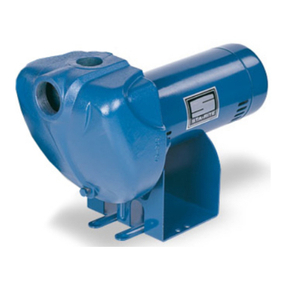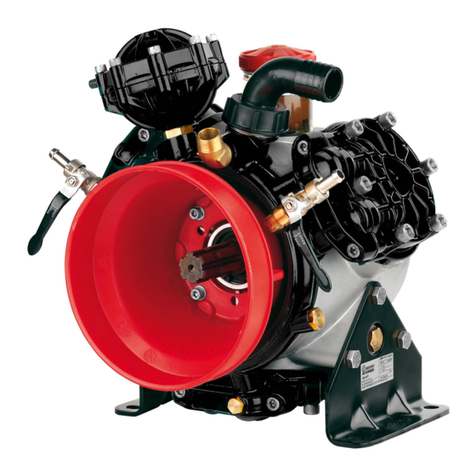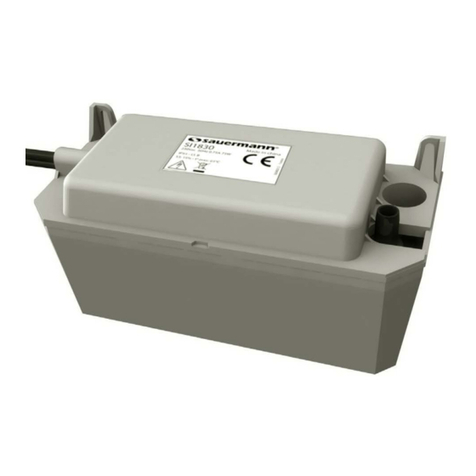
Pump Installation
Accessories should be installed with flex hose and be
mounted as close to the pump as possible. The hose
must be used right after accessories.
NOTE: If remaining installation is solid piping, a two
to four foot length of hose must be installed
between accessories and solid piping for vibration
isolation.
Hose
Selection of the right size and type of hose is vital for
good performance. Be sure to hook up to the proper
ports on the pump (note markings “IN” and “OUT” on
pump).
Suction Hose
Always use a suction hose compatible with the fluids
being pumped and at least the same inside diameter as
pump ports. If the suction hose is over 5 feet long, use
one size larger hose. Keep the suction hose as short as
possible and restrictions such as elbows, check valves,
etc. at a minimum. Use both inlet ports if the flow is to
exceed 6 gpm. Suction lift not to exceed 5 feet.
Discharge Hose
High pressure pumps require the use of special high
pressure discharge hose (2 rayon braid or equivalent).
Use a hose rated at least 50% greater than the highest
operating pressure required of pump. Example: If
required pump pressure is 300 psi, use discharge hose
rated at minimum of 450 psi working pressure.
Unloader Valve
The unloader has a very important safety function in
your plunger pump hookup. The unloader valve pro-
tects the pump by unloading pressure when the gun is
shut off or discharge is otherwise blocked. This saves
the pump and power because the liquid is bypassed at
a very low pressure. If the gun is to be shut off for more
than 5 minutes, install a thermal relief valve in the inlet
side or stop the pump to prevent heat buildup. The
length of time may vary due to the original temperature
of the fluid being pumped.
Bypass Valve
Bypass valves incorporate an adjustable spring-loaded
poppet that opens to protect the pump from over pres-
surizing when the pump outlet is shut off. The overflow
is diverted back to the inlet of the pump or back to tank.
Its main difference from an unloader valve is that it
does not reduce the power requirements or pump pres-
sure when the outlet is turned off. Instead, the pressure
stays at whatever the set operating pressure is that the
pump is working at. Bypass valves must be rated for
the max. flow of the pump because they return the full
amount of flow when the outlet is shut off. If the pump is
to run in shut-off condition for more than five minutes at
a time, it is recommended that the bypass flow goes
back to tank.
Strainers
Use a suction line strainer with at least 3 to 5 times the
suction port area in open screen area. or example, an
area of approximately 1.1 to 1.9 square inches for a
1/2" suction port. Be sure the screen is suitable for the
liquid being pumped. Keep the filter clean. A clogged
strainer will cause cavitation, which usually leads to
poor performance and wear of the pump parts.
Compound auge (Optional)
The pump should not be subjected to high suction line
vacuums. To check on this, install a compound gauge
at pump inlet. or ultimate performance and life, the
vacuum should be limited to 5 inches of mercury. High
vacuum conditions may cause premature product
failure and void warranty.
Pulsation Dampener
This device absorbs the shock and smooths out the
pump discharge pulsations, providing smoother opera-
tion. or the proper operation of many unloader valves,
the pulsation dampener should be installed on the
discharge side downstream from the unloader valve.
However, for maximum system protection, the pulsation
dampener may be installed upstream from the unloader
valve, provided the unloader valve will function properly.
The dampener can be mounted vertically or horizontally.
Pressure auge/Dampener
Use gauge capable of reading double the pump work-
ing pressure. Use a silicone-filled gauge or a gauge
dampener to protect the gauge needle against pressure
surges and provide easier reading.
Inlet/Outlet Ports
This pump has dual inlet and outlet ports for your
convenience. Use only one outlet port, and cap the
other outlet port for best performance. or flows over 6
gpm, use both inlet ports to reduce cavitation in the
diaphragm pump.
Pressure Switch/Demand Switch
A pressure switch is used to turn the motor and pump
off when the pressure at the discharge of the pump
reaches maximum operating pressure and when spray
nozzles or spray gun
have been turned off.
Pressure switches are
wired through the
normally closed (NC)
circuit. A normally
closed circuit allows
power to flow through
the switch contacts until
it reaches the switching
pressure, whereby the
contacts open and the
-3-
System Installation


















